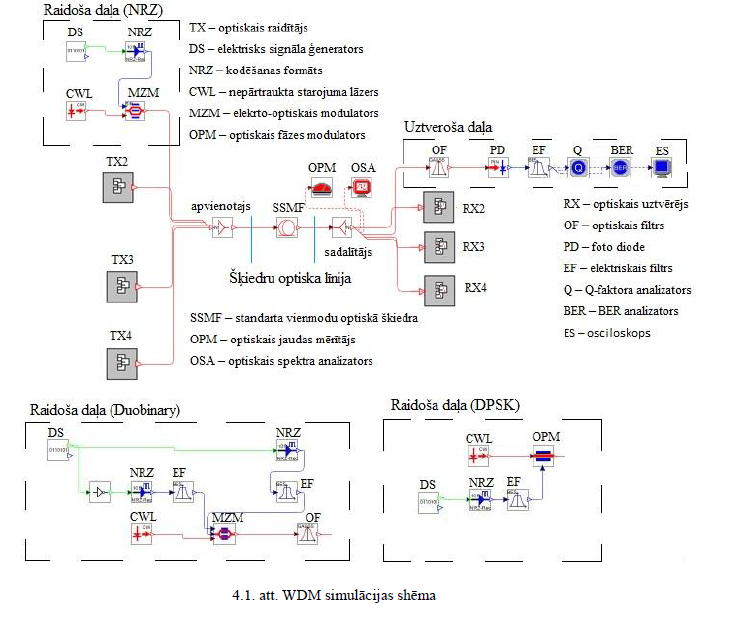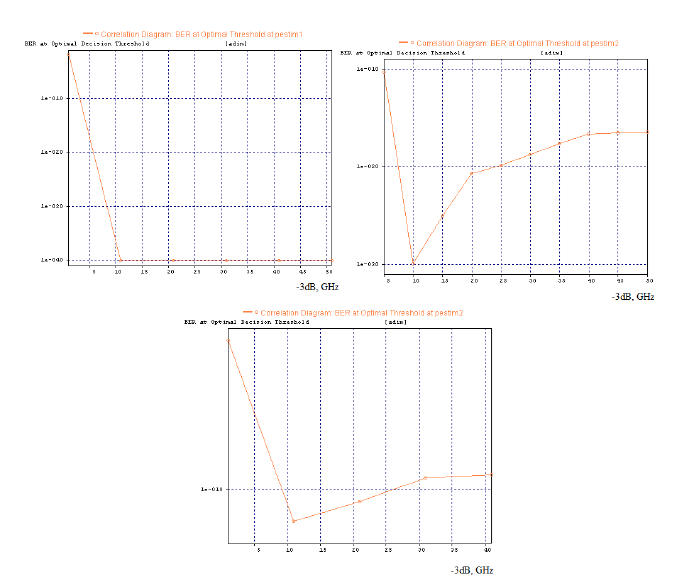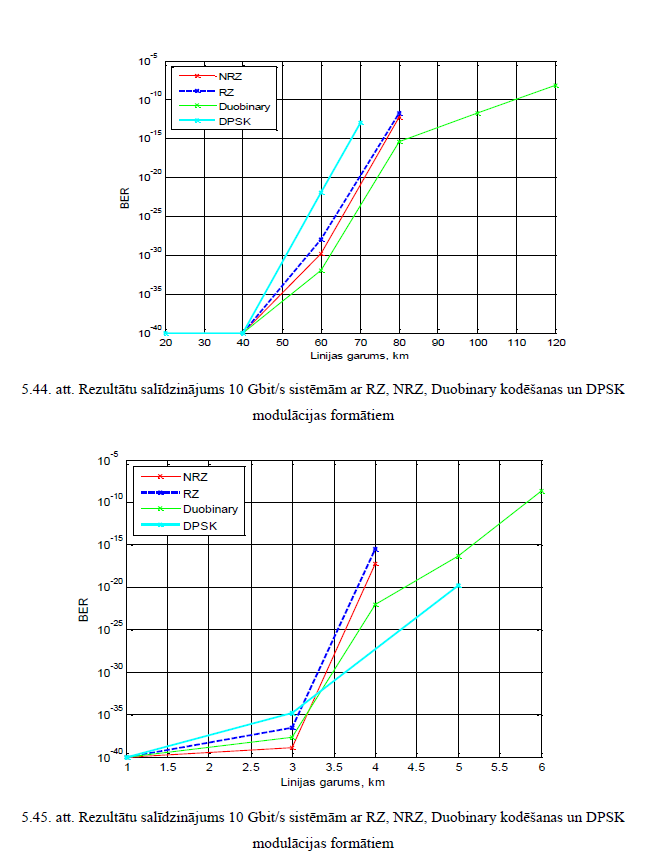Comparison of various types of modulation in WDM communication systems

My master's work. The work itself is unlikely to be interesting to anyone, because it is written in Latvian.
In the first part, I considered the intensity modulation: NRZ, RZ, Dubinary and also phase modulation: DPSK and QPSK. The second part considered the influencing factors, linear: chromatic dispersion, polarization dispersion, attenuation of the signal, as well as nonlinear effects: SPM, XPM, FWM, SBS, SRS.
The simulations were made in the OptSim program, the program is paid, it runs only with a USB key. The faculty kindly provided us ... two keys to the stream. A schedule was drawn up that when it comes and works in the program, for two hours. Perhaps the program would be available “at home”, the results could be better, more optimized, and in general, maybe it would be better to come up with something.
')
The third part is the components of the WDM system, the transmitting part, the receiving part and the line. The fourth part describes the creation of the scheme and the OptSim program, which methods it uses for counting and so on, and the fifth part is actually the simulations and the results themselves.
The most difficult thing was to create working diagrams, because I thought I did everything, set up all the components, run the simulation and see a very small BER and a fully closed eye in the glacier diagram. I did 4 schemes: 1) NRZ, 2) RZ 3) Duobinary, 4) DPSK. It so happened that 3 schemes with intensity modulation, and only one with phase. Schemes look like this:

I did not translate from Latvian, I think everything is clear. A four-channel WDM system using SSMF optical fiber (between a channel spacing of 100 GHz), did not use amplifiers and dispersion compensation. Four circuits, only transmitters changed: 1) NRZ, 2) RZ 3) Duobinary, 4) DPSK, the line is the same, with an SSMF optical fiber (changed length), the receiving part is also the same for everyone - an optical filter, photo diode, electric filter, Q factor analyzer, BER analyzer and oscilloscope. Simulations were done for both 10 Gbit / s and 40 Gbit / s.
When the circuits started working, the second hard stage of work began - the optimization of parameters, specifically electrical and optical filters, selected the optimal value for each length so that the BER was as large as possible.
Here for example

The dependence of the -3dB Besel bandpass filter on BER, for 40 km, 60 km and 80 km. If my memory serves me, it was 10 Gbit / s NRZ.
In general, it is very pleasant to work with OptSim, I started the simulation, it will immediately show you the diagrams:

and spectra:

Well, in the end, when all the schemes are configured, optimized and promoted, the results were obtained:

As you can see, Duobinary showed the best results both at 10 Gbit / s and at 40 Gbit / s. With 10 Gbit / s it works up to 120 km, with 40 Gbit / s - up to 6 km. Given that an acceptable BER for 10Gbit / s is 1x10-9, and for 40 Gbit / s it is 1x10e-12. Here, though, I got some strange results, because according to the theory, NRZ should work twice as good as RZ, due to the fact that the NRZ spectrum is twice as short, but for some reason, NRZ works a little bit better for me :) But This did not prevent me from successfully defending myself.
Source: https://habr.com/ru/post/148341/
All Articles